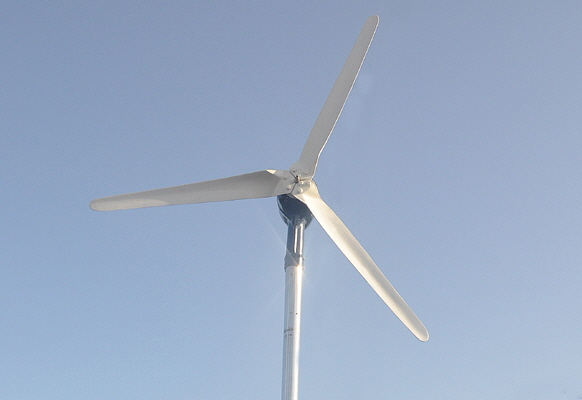 A KISS wind generator on Britania is mounted on the stern on a pole that allows it to rotate 360 degrees for any wind direction and prevents the wires becoming twisted.
A KISS wind generator on Britania is mounted on the stern on a pole that allows it to rotate 360 degrees for any wind direction and prevents the wires becoming twisted.
The generator is supposed to swivel on top of its support tube without any bearings, but it took a strong wind to swing the machine into the wind. A roller bearing reduced the friction to zero. It now rotates at the slightest breath of wind.
The machine now swings happily too and fro in any wind giving a continuous flow of 12 volt current to keep my batteries charged.
